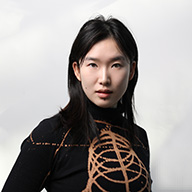What it does
ThermoCell is a modular power bank system that harvests waste heat from night market cookware to generate clean electricity. It solves the lack of charging options outdoors while promoting sustainable energy use in urban environments.
Your inspiration
When visiting night markets in Asia, I often encountered the inconvenience of needing to charge my phone outdoors. However, renewable sources like solar and wind are limited at night in urban areas. Through field research, I discovered that night markets consume large amounts of energy—vendors rely on gas stoves and mobile power, generating high emissions and wasting significant heat. For example, cookware temperatures can reach over 200°C while the ambient temperature remains around 25°C. This large temperature difference revealed a valuable, untapped energy source and inspired me to develop a sustainable, heat-powered charging solution.
How it works
ThermoCell is a modular power bank system designed for night markets. It uses thermoelectric generator (TEG) modules to convert waste heat from cookware—such as grills or frying pans—into electricity. The modules attach magnetically to metal cooking surfaces, where a temperature difference of over 100°C between the cookware and the environment enables electricity generation. This energy charges internal batteries, which are then used in shared power banks for visitors. ThermoCell consists of two parts: a TEG unit and a portable power bank. The TEG unit is wrapped in heat-resistant silicone with aluminum for safe heat transfer, and multiple units can be connected to boost output. The power banks include built-in USB-C and Lightning cables and can be easily attached to the TEG or handed out. The whole system is designed to be safe, easy to transport, and low-maintenance, offering a sustainable charging solution where electricity access is limited.
Design process
The design process began with field research at night markets, where I observed energy use and interviewed vendors and visitors. I identified the challenge of limited electricity access and significant waste heat from cookware. This led to the idea of using thermoelectric technology to convert that heat into power. I started by testing thermoelectric generator (TEG) components in the lab. In early prototypes, I used aluminum and heat sinks to improve heat transfer and experimented with different temperature conditions. I confirmed that a temperature difference of around 40°C could charge a small battery, and larger differences—like 150°C on a grill—greatly increased output. From there, I developed modular TEG units that attach magnetically to metal cookware. I refined the shape for better heat collection and added silicone casings for insulation and safety. I then designed power banks with built-in cables and magnetic connectors. Multiple form studies and CAD models helped determine the most efficient and user-friendly shape. I also built a service system prototype, including a website and a quiz tool to help vendors estimate needed devices. The final system balances energy efficiency, ease of use, and sustainability, and continues to evolve based on user feedback.
How it is different
Unlike traditional portable chargers or energy solutions, the ThermoCell is designed for nighttime outdoor use where solar and wind power are not effective. It is unique in its ability to convert existing waste heat from night market pots and pans, often lost to the environment, into usable electricity. While there are already some industrial thermoelectric products available, ThermoCel incorporates TEG technology into a lifestyle product that combines safe materials, user-friendly design and a shared service model. Vendors benefit from reduced power costs and increased revenue, while tourists receive sustainable cell phone charging. The system is scalable, easily transportable and supports recycling, making it both environmentally and economically friendly.
Future plans
The next step is to refine the prototype through real-world testing in night markets to improve performance and user experience. I plan to collaborate with engineers to enhance efficiency and explore eco-friendly materials. I also aim to partner with local organizers for small-scale pilot programs. In the future, I hope to expand the system to other outdoor events and urban public spaces, promoting low-carbon energy solutions and raising awareness of sustainable design.
Awards
German Design Graduate 2024 Finalist Berlin Design Week 2024



Connect